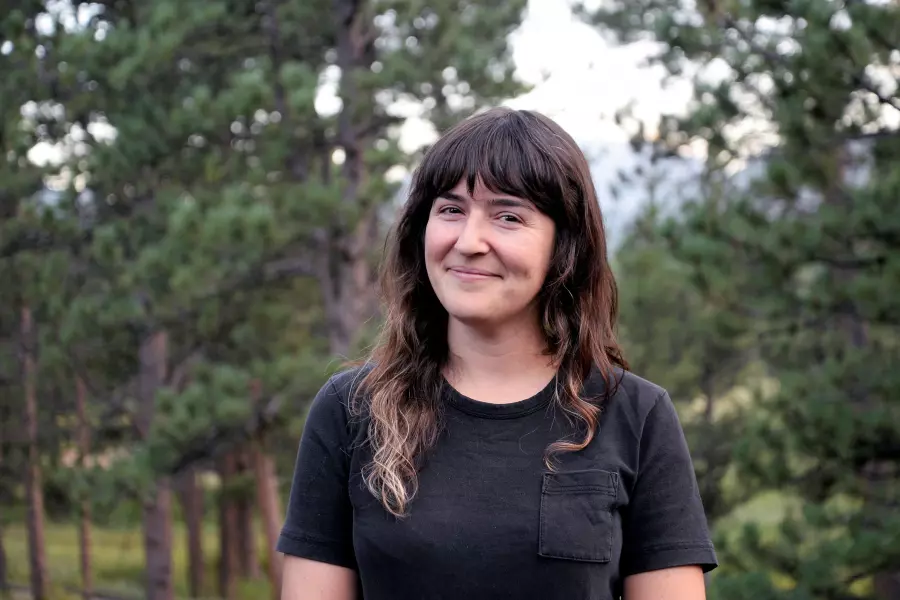
Je umělkyně a architektka. V letech 2022-2023 strávila devět měsíců v České republice, kde zkoumala vývoj výroby a konceptualizace českého skla od roku 1948 do současnosti. V září přišla na Univerzitu Tomáše Bati ve Zlíně z Rhode Island School of Design v Providence. Jaké byly její zkušenosti z Česka?
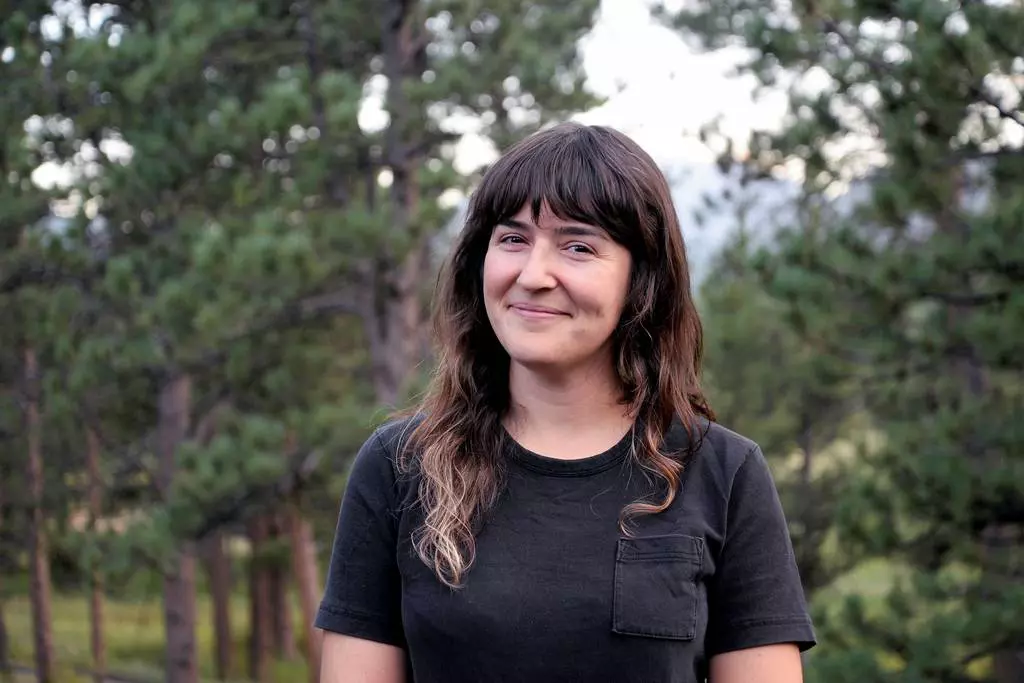
Her local Fulbright mentor and guide Petr Stanický, a Fulbright alumnus himself, currently heads the Glass Department at Univerzita Tomáše Bati in Zlín, and he was an invaluable source of information, inspiration, as well as tips for further exploration of various glass traditions all over the country. Throughout her stay, Mandy traveled extensively to research and compare various glass making techniques in “Crystal Valley” in northern Bohemia, Karlovy Vary, Janštejn, Valašské Meziříčí, among many others. She created a body of work in response to her travels. When comparing the Czech and American glass scene, Mandy shares that: “Something that really stands out to me is the different types of schooling—there are schools dedicated to several methods of glass-working so some students have been working with glass pretty intensively in a specialized way since they were teens.”
This interview is the 26th part of our Fulbright series to celebrate 30 years of the Fulbright Program in the Czech Republic. Interviews are conducted in cooperation with Ladislav Loukota from Vědátor platform. Video recordings of all the live interviews are published on Facebook page on the first Wednesday of every month, and are available on YouTube channel.
How did found out about Fulbright, and what motivated you pick the Fulbright stay? Did you thought about other alternatives?
I found out about Fulbright through my university, Rhode Island School of Design, when I was a graduate student pursuing my Master in Fine Arts degree in glass. Having lived in the U.S. my whole life, I thought it would be interesting to be in another country for an extended period of time. While I had always wanted to travel to Czechia, it wasn’t until I started considering Fulbright more that it clicked and thought maybe it would be great to be in Czechia for an extended period.
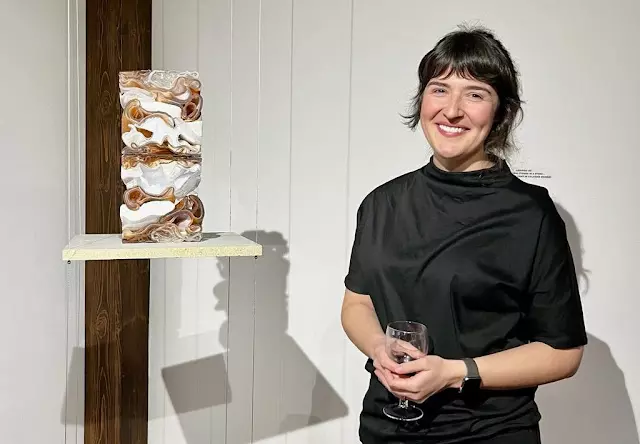
Mandy with her sculpture, "Several Stories in a Stone: 150 Years of Glass in Valašské Meziříčí" as part of the group show, Z povahy věcí, at the Galerie Sýpka in Valašské Meziříčí, Spring 2023.
In connection to that - what did motivate you to be interested in glass art? What do you find interesting about glass? And how did you learn about the Czech glass?
Really, I just thought glass was such an interesting material in how it is made and what it can do. You can do so much with glass—it can be blown, hollow, cast, solid, cut. It can defy gravity despite being quite heavy! There is no material like it. I started working with glass during my final year of studying architecture as an undergrad. My entry into glass wasn’t really refined and maybe a little dangerous—my learning how to “work with glass” looked like trying to melt beer bottles with a welding torch which would just cause it to explode.
I learned about Czech glass when I visited the Corning Museum of Glass and saw really just the largest glass sculptures that I had ever seen. Huge, mostly solid, glass sculptures, which in the glass world are all pretty much mean that it wasn’t easy to make and, if made today, would be really expensive. How was any of that possible? So I had already fell into the rabbit hole at that point because there are so many interesting glass-facts dating back hundreds of year before that.
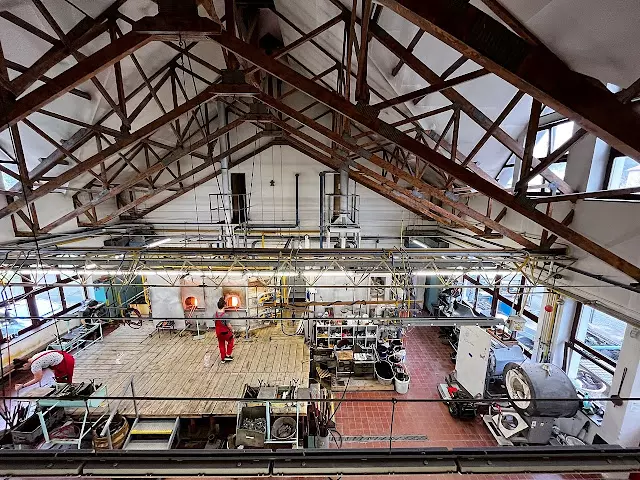
Mandy was inspired history of the glass school, Střední uměleckoprůmyslová škola sklářská in Valašské Meziříčí, and glass history in the Moravian region. She had the opportunity to learn from the teachers at the school and work in the shop throughout her time in Czech Republic.
How was your stay here? What surprised you the most - especially considering you stayed in Zlín, while many foreign student don't move outside of Prague?
It has been great and I have loved it. I enjoy being in a non-tourist centered area. I think it’s really been interesting to learn about certain cultural attitudes, traditions, art, food/drink (I didn’t realize slivovice was a Moravian specialty) in Moravia. It’s hard to explain, but what surprised me the most is the different levels that you can find relatability, kindness, with others, even if you don’t know each other’s languages that well. Tož tak!
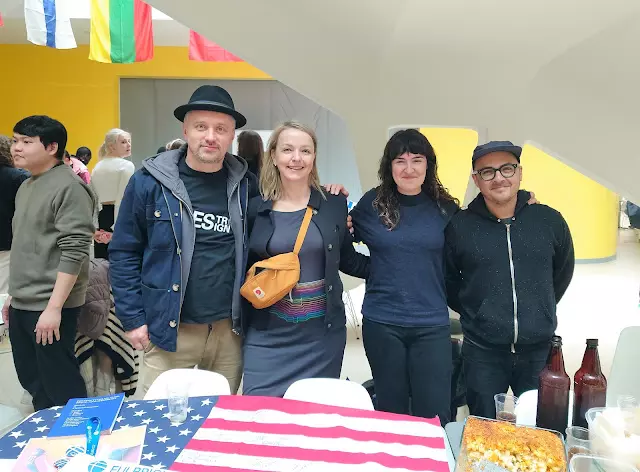
Student social event at Tomáš Baťa University in Zlín, Spring 2023. From right to left Petr Stanický, Mandy's host and mentor, Andrea Semancová, Fulbright Program Officer, Mandy and her husband.
What is the most striking new knowledge about glass art will you take with you to the U.S.?
I’ve learned so much more about the history and lineage in a way that I didn’t expect and not sure I could in the U.S. One of my favorite moments was being invited to experience of making glass from batch—or raw materials. Basically you saw sand and other ingredients transform into glass—it was magic!
Can you compare Czech and American approach to glass art?
Something that really stands out to me is the different types of schooling—like there can be very technical school dedicated to technical and/or art glass-making so some students have been working with glass pretty intensively in a specialized way since they were teens. One of the glassworkers I know is a second-generation glassworker. You don’t really see that multigenerational aspect as much in the U.S.
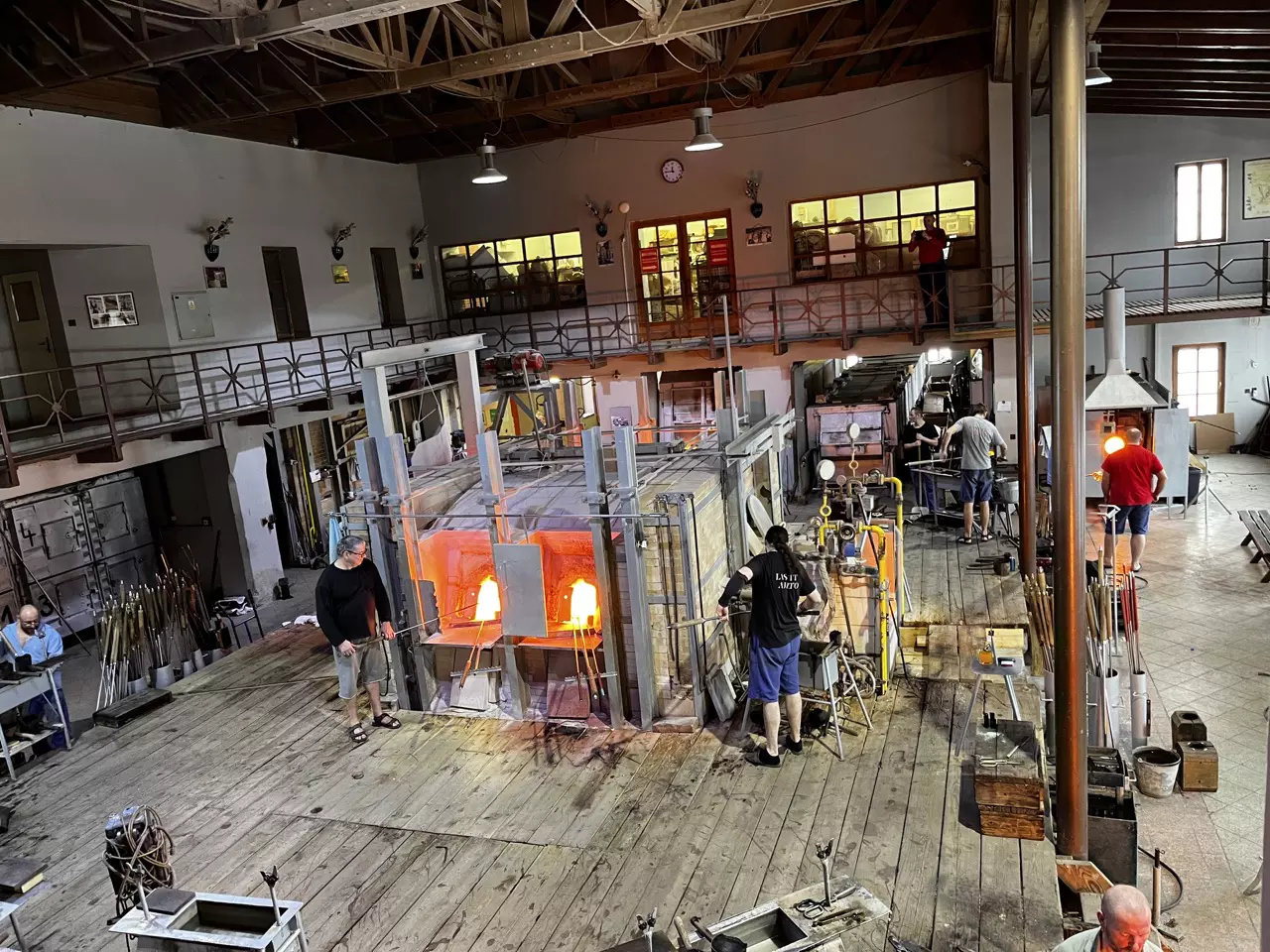
Visit of Lasvit Ajeto hotshop, Winter 2023, Lindava.
How many foreign students did you encounter in Zlín? Did you find you have something in common?
I’ve met many! I was kindly invited by the Office of International Students to different events and Czech language classes so I met students from so many places including Iraq, Pakistan, India, Kazakhstan, Ukraine, Nigeria, Georgia to name a few. I think programs like Fulbright are really important because you get to meet people, sometimes for a more extended period, and realize that in one-on-one situations. Based on a cookout I went to, I’ve learned that there are so many different ways to use a grill, but basically everyone likes to eat the food that comes off of it. So there’s always that. And based on my fellow Czech language class attendees I think another commonality is that many of us think Czech is not the easiest language to learn. But we are trying!
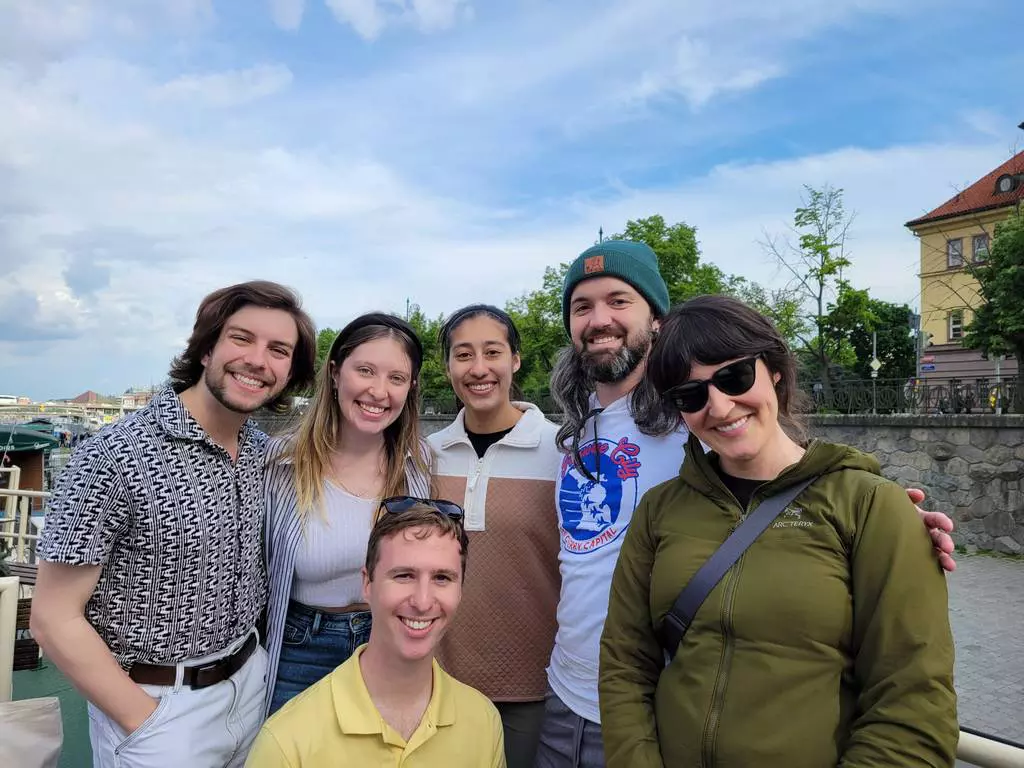
Mandy with other U.S. Fulbrighters in the Czech Republic, May 2023, Prague.
Is there something you would do differently, or something you'd suggest your younger self?
A former professor and mentor told me something along the lines of it being okay to not have a linear career path—put your effort into what you are currently doing and the future will sort itself out. I wish I heard—and believed—that earlier, because I really think that taking the circuitous path is why I am here.
The traditional final question: What do you think everyone should know about the subject of glass art?
If you are able to get access to a glass studio, try it! Just avoid the glass bottle/welding torch method.
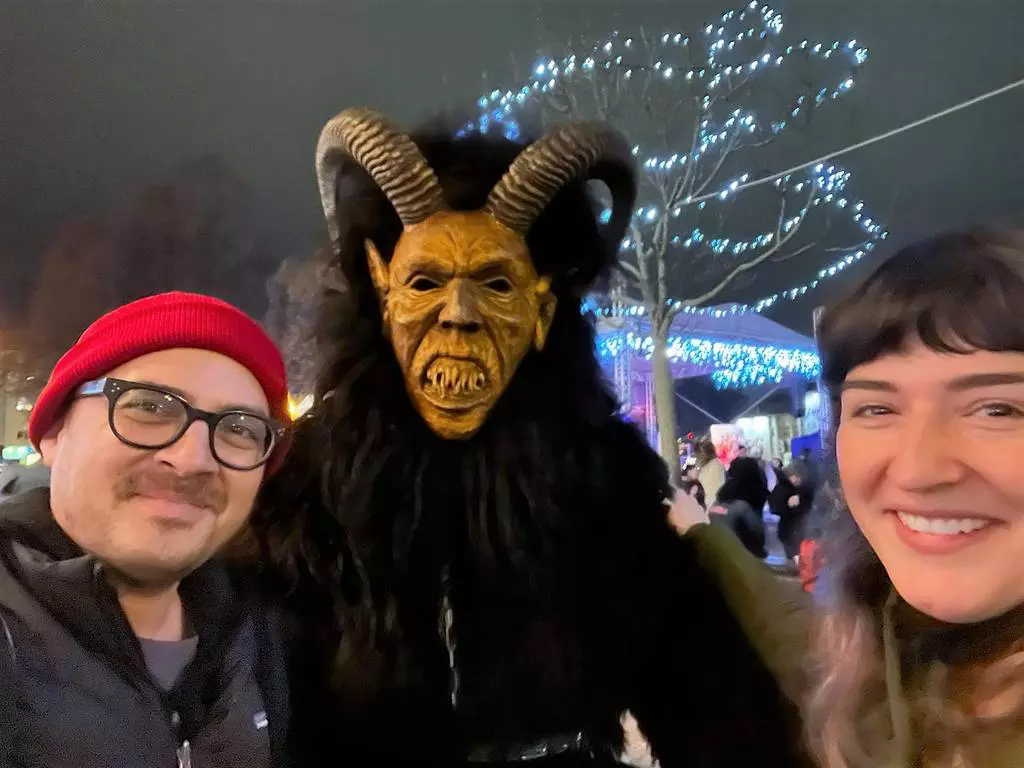
Mandy and her husband exploring Czech Christmas traditions in Zlín, December 2022.
Zdroj: Komise J. Williama Fulbright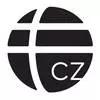
Článek vyšel v srpnu 2023 na blogu Fulbrightovy komise.
- Autor článku: ne








































